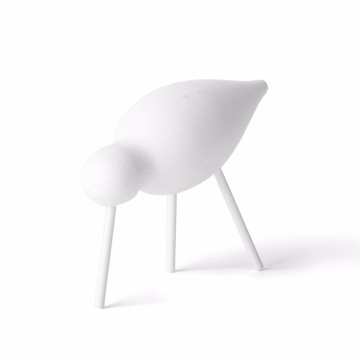From Street Food to Gourmet: The Many Styles of Gyoza
Few dishes capture the essence of Japanese comfort food quite like gyoza—delicate, flavor-packed dumplings that range from humble street snacks to refined gourmet creations. Inspired by Chinese jiaozi, Japanese gyoza has evolved into a distinct culinary treasure, beloved for its crisp exterior, tender chew, and juicy, umami-rich filling. Whether sizzling on a griddle at a bustling yatai (street stall) or meticulously plated in an upscale restaurant, gyoza offers an exceptional interplay of texture and flavor, making it an irresistible favorite.
The Anatomy of the Perfect Gyoza
At its core, gyoza consists of a thin, pliable wheat-based wrapper encasing a savory, well-seasoned filling. Achieving the perfect bite requires a delicate balance:
- The Wrapper – Unlike its thicker Chinese counterpart, Japanese gyoza dough is rolled thinner, allowing for a crisp, golden crust when pan-fried while maintaining a satisfyingly chewy texture.
- The Filling – The classic gyoza filling is a finely minced blend of ground pork, napa cabbage, garlic, ginger, scallions, and sesame oil, seasoned with soy sauce and a hint of sake or mirin. The filling must be juicy yet light, with an umami depth that lingers.
- The Cooking Method – The preparation of gyoza can drastically transform its texture and flavor profile, offering everything from a delicate, silky bite to a deeply crisped crunch.
The Three Main Styles of Gyoza
-
Yaki Gyoza (Pan-Fried Gyoza) – The Gold Standard
Perhaps the most iconic preparation, yaki gyoza is celebrated for its contrast of crispy, golden bottoms and soft, steamed tops. Achieved through a steam-fry technique, the dumplings are first seared in a scorching-hot pan until they develop a deep amber crust, then steamed with a splash of water before being crisped again as the liquid evaporates.
A refined variation, hanetsuki gyoza ("winged" gyoza), creates a delicate lattice-like, paper-thin crust formed by adding a cornstarch slurry to the pan during cooking, resulting in a stunning presentation and a satisfying crunch.
Yaki gyoza is typically served with a tangy dipping sauce composed of soy sauce, rice vinegar, and chili-infused sesame oil (ra-yu)—a perfect balance of salty, sour, and spicy notes that amplify the dumpling’s umami.
- Sui Gyoza (Boiled Gyoza) – Delicate and Elegant
For a softer, silkier experience, sui gyoza (boiled gyoza) offers a more delicate, refined texture. Poached in lightly salted water or a savory dashi-infused broth, these dumplings become plump and tender, emphasizing the natural sweetness and succulence of the filling without the added crispiness of frying.
Sui gyoza is often served in a light soy-based broth with finely sliced scallions, a drizzle of chili oil, or a splash of ponzu (a citrusy soy sauce) to enhance its delicate umami profile. Some variations feature gyoza floating in rich tonkotsu or miso broth, offering a comforting fusion of flavors.
- Age Gyoza (Deep-Fried Gyoza) – Indulgently Crisp
For those who crave extra crunch, age gyoza is a decadent take on the classic dumpling. Deep-fried until golden and blistered, this style transforms the gyoza into a crispy, airy shell with a piping-hot, juicy filling. The contrast between the shatteringly crisp exterior and the tender meat inside creates a deeply satisfying textural experience.
Age gyoza is often served with a drizzle of sweet chili sauce, yuzu-kosho mayo, or a dusting of shichimi togarashi (Japanese seven-spice blend), enhancing its complexity with spicy, citrusy, and umami-forward notes
Regional and Gourmet Variations of Gyoza
Across Japan, different regions have crafted their own unique interpretations of gyoza, each showcasing local ingredients, specialized techniques, and innovative presentations.
- Hamamatsu Gyoza (Shizuoka Prefecture) – Known for its distinctive circular arrangement, Hamamatsu gyoza is grilled in a perfect ring and served with a side of crisp bean sprouts, offering an added layer of texture and freshness. The filling is vegetable-forward, often containing a higher ratio of cabbage to pork, resulting in a lighter, more refreshing bite.
- Utsunomiya Gyoza (Tochigi Prefecture) – Hailed as Japan’s gyoza capital, Utsunomiya offers over 200 specialty gyoza restaurants, each showcasing diverse cooking styles and unique dipping sauces. The region is particularly famous for its fluffy, juicy steamed gyoza and its robust, garlicky pan-fried variations.
- Hakata Gyoza (Fukuoka Prefecture) – These miniature bite-sized dumplings are grilled on sizzling cast-iron plates, creating extra-crispy textures. They are traditionally served with a tart yuzu-infused ponzu dipping sauce, adding a refreshing citrusy contrast.
Gourmet Innovations & Fusion Gyoza
As gyoza continues to evolve in the culinary world, chefs have begun experimenting with high-end ingredients and innovative fillings, elevating these dumplings to luxury dining experiences.
- Wagyu Gyoza – Filled with marbled A5 Wagyu beef, this premium variation melts in the mouth, offering an intensely rich and umami-packed bite.
- Truffle Gyoza – A fusion of Japanese precision and European indulgence, these gyoza are infused with black truffle paste or topped with delicate truffle shavings, adding an earthy, aromatic depth.
- Cheese-Stuffed Gyoza – A popular izakaya twist, these gyoza ooze with molten cheese, blending creamy, salty richness with the traditional umami filling.
From Street Snack to Gourmet Art
Gyoza’s remarkable versatility allows it to transition effortlessly from casual street food to fine dining artistry. Whether enjoyed fresh off a sizzling griddle at a late-night yatai, paired with a crisp glass of sake in a refined restaurant, or infused with luxury ingredients in a modern fusion kitchen, gyoza remains a timeless symbol of Japanese culinary craftsmanship.
Would you go for the classic, crispy yaki gyoza, the refined silkiness of sui gyoza, or the indulgent crunch of age gyoza?




